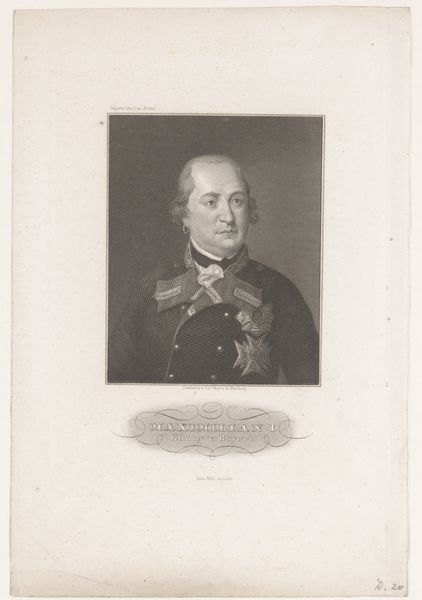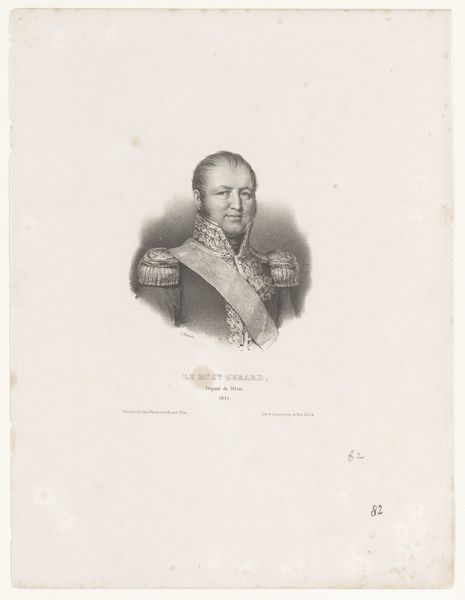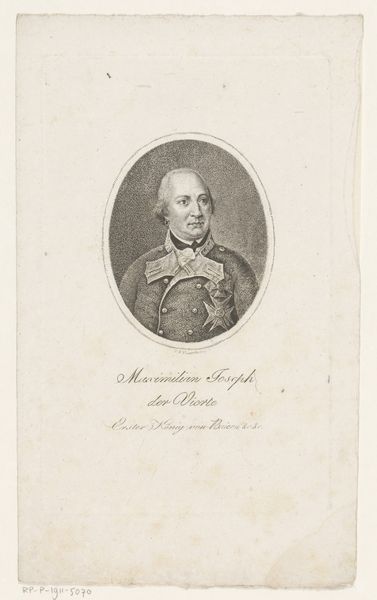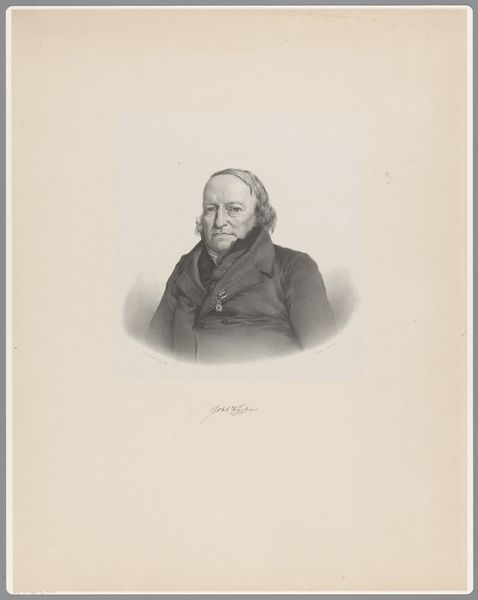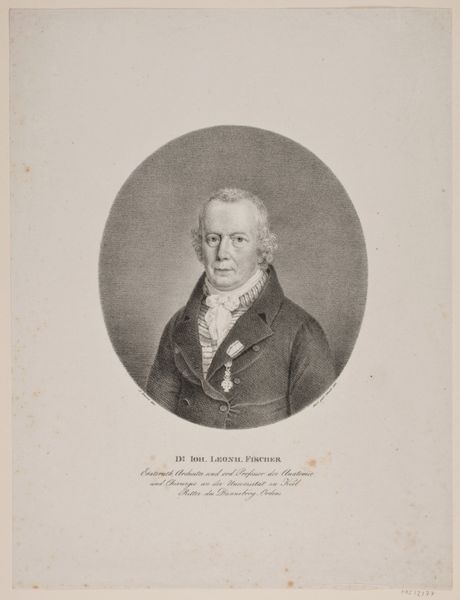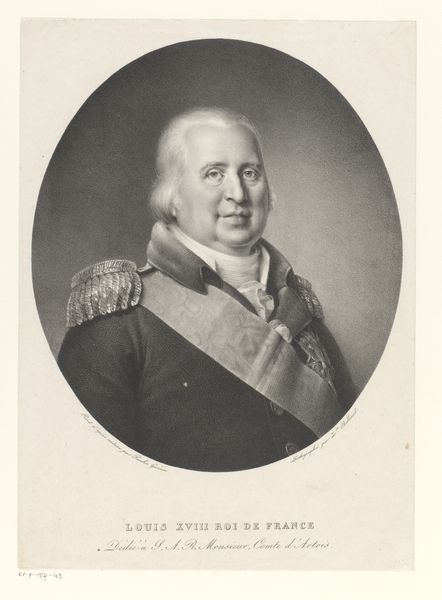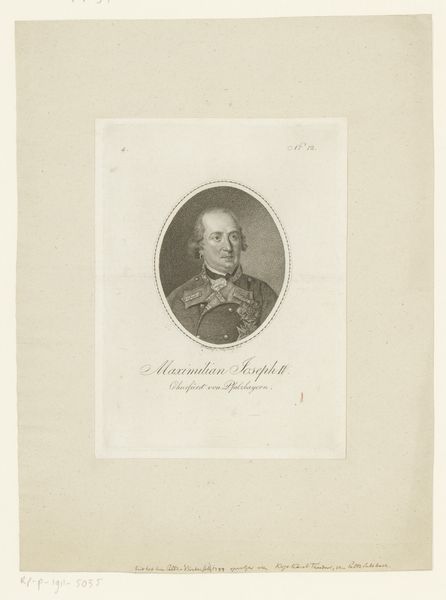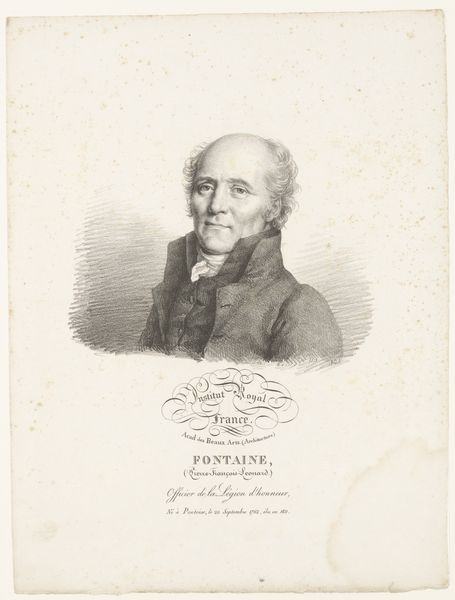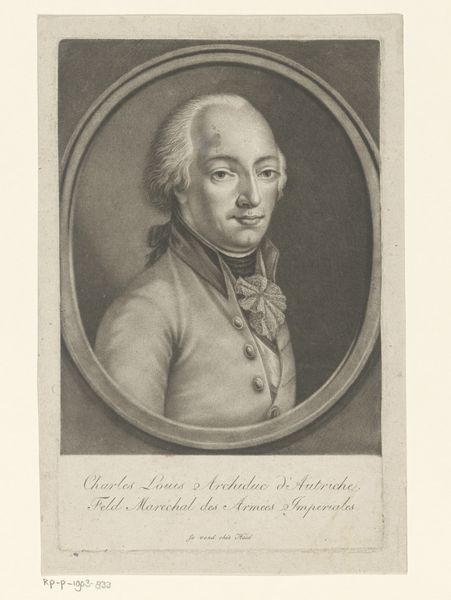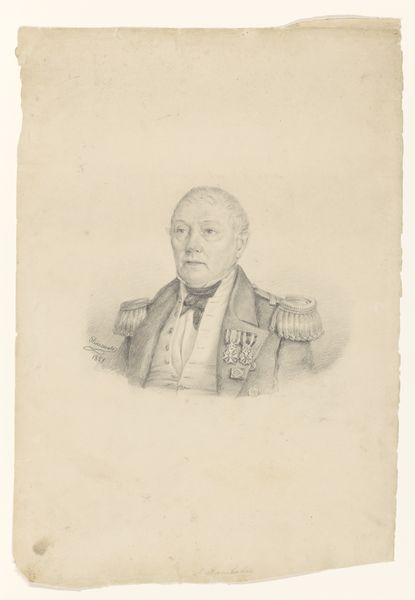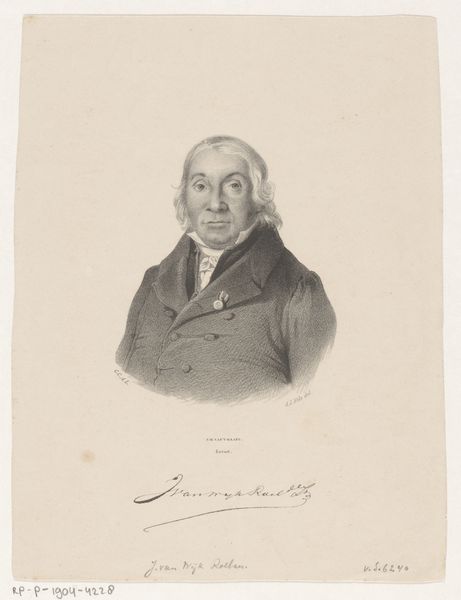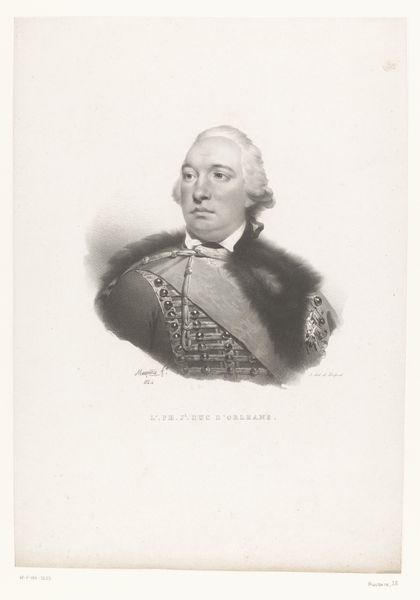
print, engraving
#
portrait
#
neoclacissism
# print
#
pencil drawing
#
history-painting
#
engraving
#
realism
Dimensions: height 425 mm, width 304 mm
Copyright: Rijks Museum: Open Domain
This is a portrait of Maximilian I Joseph, King of Bavaria, made by Joseph Peter Paul Rauschmayr. It is, first and foremost, an image of power. The King is adorned with medals and finery. He leans casually, indicating his elevated position. The very existence of portraiture was bound to power structures. Only those with power and money could afford to have their likeness captured. But it also served another purpose; it was a tool used to circulate their image, and thus, their power. This portrait was made in Bavaria, a region undergoing significant political change. It reflects the social structure of its time, a society still very much defined by monarchy and aristocracy. Consider also the institutional history; portraits of monarchs were often commissioned to project an image of authority. To truly understand a piece like this, we must delve into the social, political, and economic conditions of the time, looking at the power structures that shaped its creation and reception. The historian uses sources from the time, analyzing them to get a better grasp of the context from which the art emerged.
Comments
No comments
Be the first to comment and join the conversation on the ultimate creative platform.
